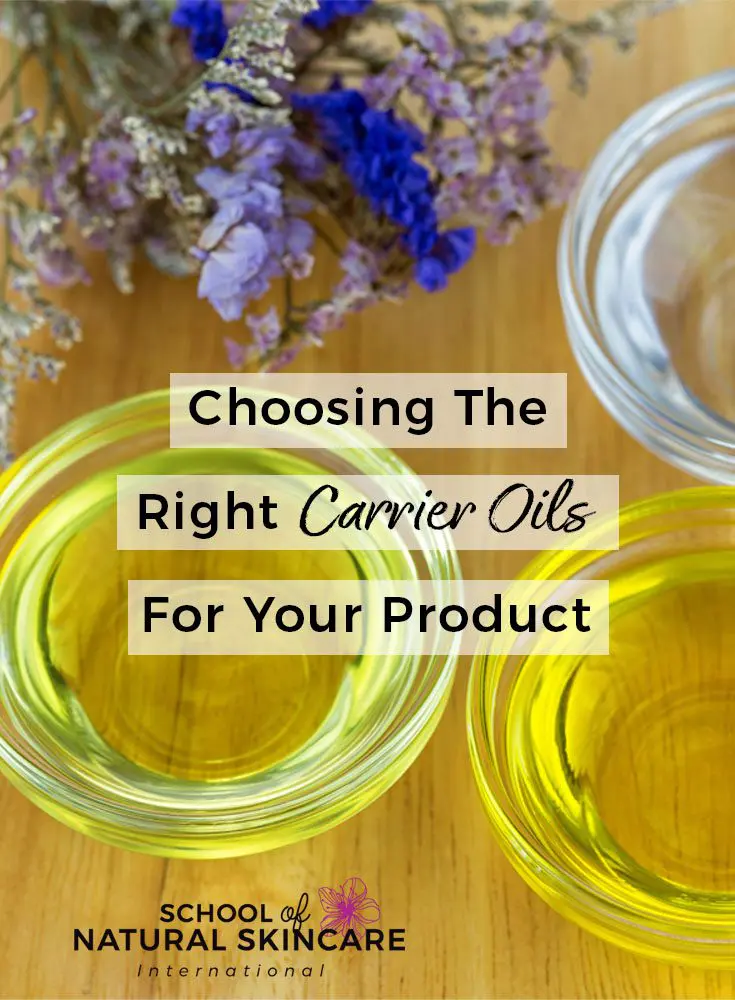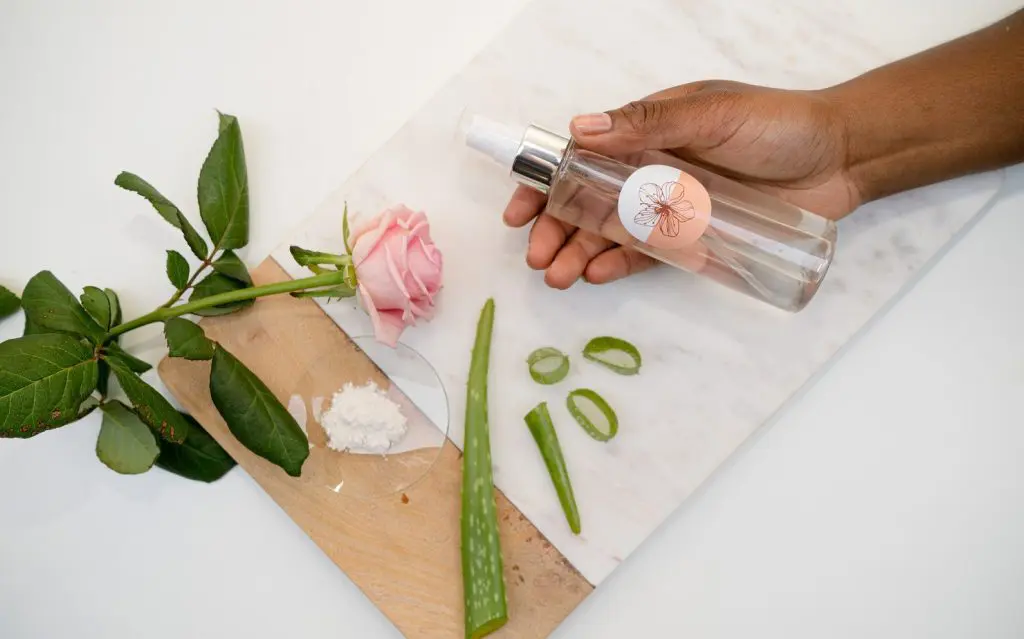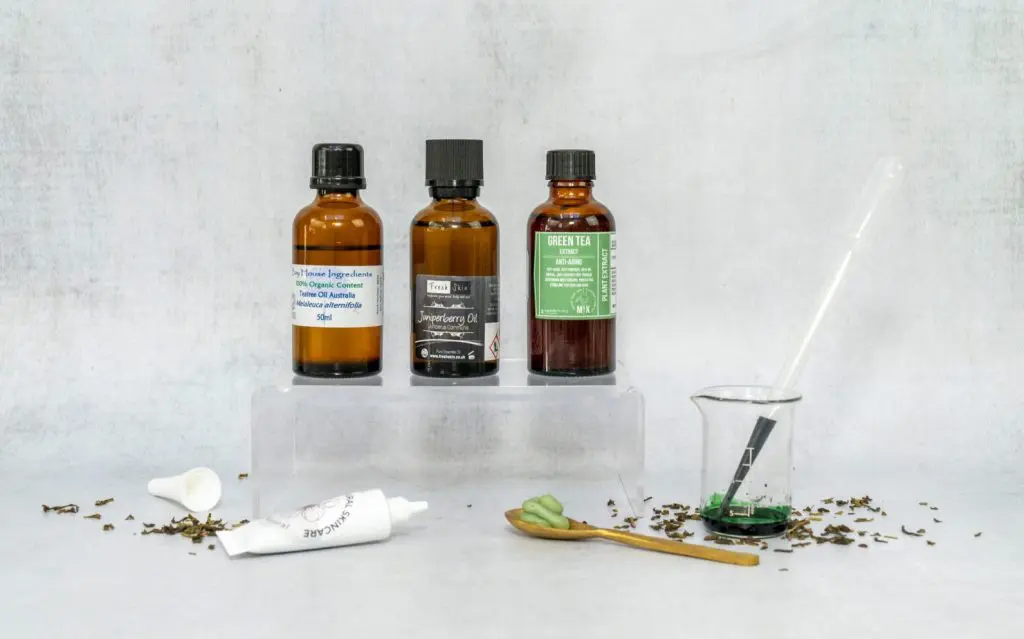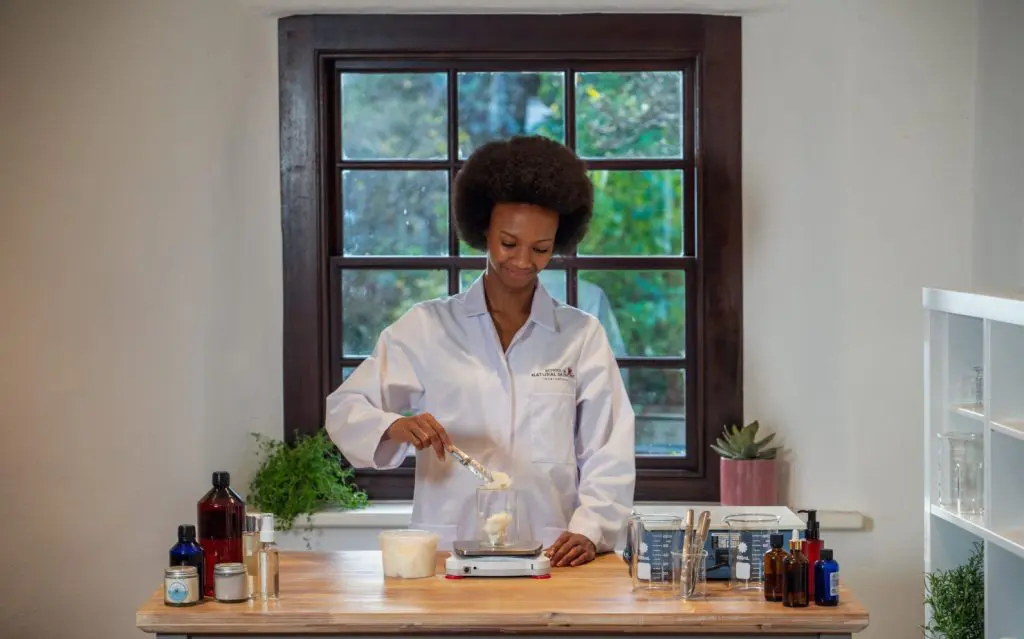We’ve already shared some of the easy ways that different ingredients can be swapped for more affordable, luxurious, or high-performance choices. When it comes to most formulations, many carrier oils can be swapped out in fairly equal amounts, without much adjustment to the ratios and proportions of your initial formulation. But by understanding more about what function a carrier oil serves in a skincare product—what added benefits to things like skin feel, texture and spreadability, and the absorption rate each different carrier oil provides—helps you make more informed choices.
So, beyond factors such as availability and affordability, why would one specific carrier oil work better in your product than another? Let’s explore further, starting with what a carrier oil actually is.

The Science of Carrier Oils
A carrier oil is, to put it simply, a type of liquid fat, or lipid, which has been derived from a plant’s kernel, nut, or seed. They are called carrier oils because they are used to carry, or dilute, another oil which might be too strong to be applied to the skin directly. Carrier oils can be made in a variety of different ways, using different methods, and achieving different results.
- One way that carrier oils are made is through the process of mechanical extraction—either cold pressing, or expeller pressing. While cold pressing involves literally pressing the seeds or other plant materials with a press to extract the oil, expeller pressing processes the ingredients through friction and continuous pressure. The raw ingredients are put into a contained cavity where a large screw-like internal mechanism uses heat and pressure to extract the oils, which are then filtered out. The final temperature of the oils can reach between 140–210º F (60–99º C)
- Oils can also be extracted with solvents. This involves grinding the seed or kernel, and then washing it in a petroleum distillate, such as hexane, which releases the oil. After the oil has been released, is heated to 212º F (100º C) in a sealed chamber, to distill the solvent. Theoretically, this process leaves no traces of solvents behind, but complete removal cannot be guaranteed, and often, very tracy amounts remain in the finished oil.
- Carrier oils can also be sold as refined, meaning they have undergone additional processing to remove unwanted elements, such as colors, flavors, aromas, or particulate matter. You can learn more about refined and unrefined carrier oils here.
- Finally, carrier oils can be produced through maceration, which involves leaving a dry plant immersed in some type of warmed oil to release certain beneficial extracts.
Examples of cold-pressed oils include almond oil, olive oil, and coconut oil, because they are each made from that single ingredient: Almonds, olives, or coconuts! Examples of infused oils include calendula infused oil, carrot tissue infused oil, and St. John’s wort infused oil.
There are so many more options than these!
When it comes to choosing the right carrier oil out of all of these possibilities, familiarizing yourself with how carrier oils function, and the differences between each one, can help you fine-tune your finished product.
So, what do Carrier Oils do?
The natural chemical compounds which comprise carrier oils are called fatty acids, and they are vital for survival, health and wellbeing, both inside the body and on the skin. Fatty acids provide insulation and shock absorption, are a source of vitamins and energy and are also essential for healthy cell growth.
Given that each oil is made from a different source ingredient, and from different processing methods, the benefits of each oil will differ. Add on the infusions to that equation, and you have differences which are sometimes subtle, and sometimes quite distinct.
Making an Informed Choice
Choosing the proper carrier oil for your product depends on several factors. Which ones take priority are up to you, your budget, and your company’s ethos. The coursework for the Diploma in Natural Skincare Formulation covers many more of these, and in much greater depth, but some of the most common factors include the following:

What kind of product are you making?
The first factor to consider is what kind of product you are making. This will help you decide what kind of carrier oil to choose. Are you making a massage oil, a bath oil, a rinse-off cleansing oil, a body lotion or a facial serum? Each of these require different formulation types, consistencies, and ingredient choices.
For example. if the product you’re making is intended to be used by therapists as a massage oil, then you know that they will use quite a lot of product for each treatment. Massage oil will need to spread a long way and not be absorbed too quickly, because therapists need time to carry out massage strokes. Because of these factors, an expensive carrier oil is probably not the best choice.
If you are making a rinse-off cleansing oil or lotion, then not much of the oil will be absorbed by the skin; a specialized, expensive oil is probably not the best choice for this product type, as you won’t get the maximum benefit from it. On the other hand, these types of oils would be perfect for a facial serum which is intended to be applied to a small surface area (just the face!) and to target a specific skin type or condition.
What skin type will the product be used on?
Formulating with skin type in mind is probably the easiest way to make an instant connection with your audience. People often know (or at least suspect!) that they have dry, oily, or sensitive skin, and it’s great to offer a product that’s targeted to their most identifiable challenge.
Dry Skin
For dry skin, the greatest challenge is repairing the damaged upper layer and ensuring that the skin not only receives nourishing moisture, but retains it. Richer oils such as avocado oil, argan oil, and wheatgerm oil stay on the skin longer and work with the body’s natural processes to heal the damaged skin barrier. Cocoa butter, which is an occlusive, can be used in formulations for the driest of skin to ensure that those rich oils stay there and do their jobs!
Oily Skin
On the other hand, it’s a common misconception that using oil on oily skin will exacerbate the problem, but that’s not true! In fact, oily skin often overproduces oil because it’s damaged and in need of deep hydration. Because of this, using carrier oils in your product which replicate the sebum layer can help correct the skin back into normal function. Oils such as squalane or jojoba are ideally suited to this purpose.
There’s so much more to be said on skin types! This is just the very tip of the iceberg when it comes to understanding skin types, and we’ll definitely be sharing more about it in future articles. For a truly comprehensive look into the science of carrier oils, our Diploma in Natural Skincare Formulation covers other factors, such as spreadability, absorption, and skin feel.

What color and aroma do you intend the end product to have?
Deciding how you want the product to function means taking into account what type of product you are making, where it is intended to be applied, and what result it is intended to achieve on application as well as long-term wear.
Put more simply: How will your finished product be used, and by whom?
Even factors as simple as the color, texture, and smell of a carrier oil can really affect how you select them for any given formulation. Unrefined oils have many more active compounds, but they also often have a stronger aroma or color. Do the benefits added by something like unrefined avocado oil mean you’ll have a more challenging time incorporating other scents, or have to use stronger essential oils to balance it? Or, for any Carotenoid rich oils, such as carrot oil, sea buckthorn oil, rosehip seed oil, how will you balance their strong orange coloring within your finished product?
Any one of these considerations doesn’t mean that you can’t use these particular oils, just that the more you learn about them, the better choices you can make. (And the less product you waste in testing it out!)
And remember, choosing the right ingredients means knowing how to work with their natural attributes, not against them. You can learn how to incorporate the lovely coconut scent from virgin coconut oil, or the chocolate scent of unrefined cocoa butter, or even the light marzipan aroma of plum kernel oil, to create something wonderful, complex, and effective.
How expensive and easy to find is the ingredient?
When you start to think about formulation from a business perspective, things like ingredient cost and availability start to take on a whole new scale. Instead of buying ingredients to test and try for personal use or smaller-scale batches, you’ll need to consider how your formulations’ cost and pricing remains balanced.
You should ensure that the ingredients you eventually do select are readily available to you, or at the very least can be purchased and stored safely, so you can continue making your product. The question of storage is especially applicable to carrier oils, many of which need to be stored at a proper temperature, and away from direct sunlight, in order to avoid oxidation and spoilage.
As you can see, choosing the right carrier oil is one part skincare science, one part personal goals and style, and one part business values. There are so many detailed factors to take into consideration, and if you want to know more about choosing the right ingredient for your product, or how you can use ingredients to craft a product story or tap into a buying trend, then you should visit our information page to learn more about the Diploma in Natural Skincare Formulation. This fully online, multimedia course allows you to study at your own pace and learn just about everything you need to know to start your skin care business with expertise, solid practice, and confidence. Visit today!
Free Guide
The Beginner's Guide to Formulating Natural Skincare Products (From scratch, like a professional!)
Start creating your own natural skincare products from scratch – rather than simply following recipes!
Learn how to formulate like a pro and discover our top tips for becoming a confident skincare formulator.

Exclusive for our newsletter subscribers. Sign up now.
We look after your data in accordance with our privacy policy.
Download this fabulous guide and you’ll learn:
- What formulating is and why you need to be doing it!
- The difference between following recipes and formulating your own products.
- Our step-by-step process to designing products people love.
- Four easy ways to personalize your skincare products.
- Choosing the right carrier oils for your beauty products.
- Plus, you’ll get our Safe Product Checklist: How to make sure the skincare products you make are safe and stable
Enjoyed reading about carrier oils? Save this image below on Pinterest so you can be sure to remember!





